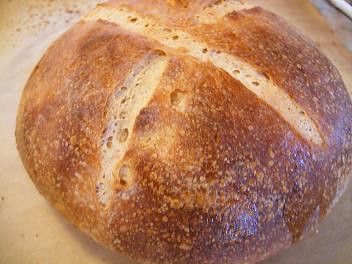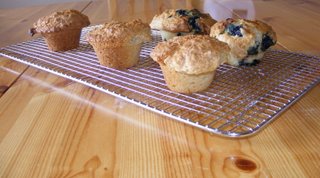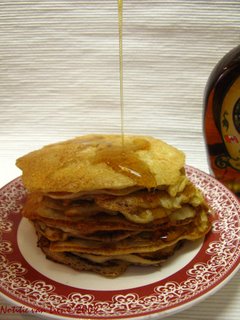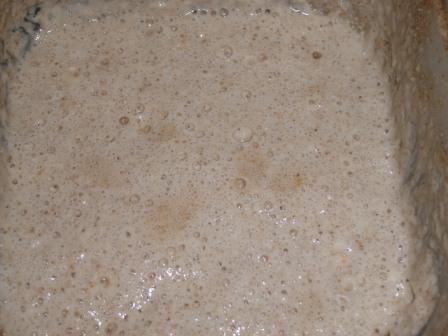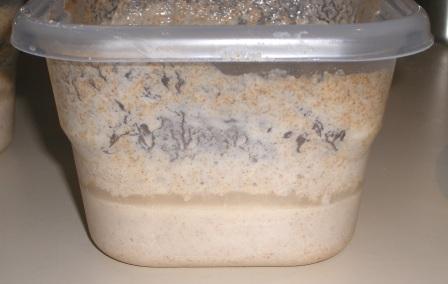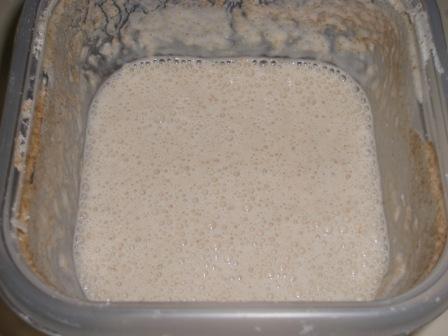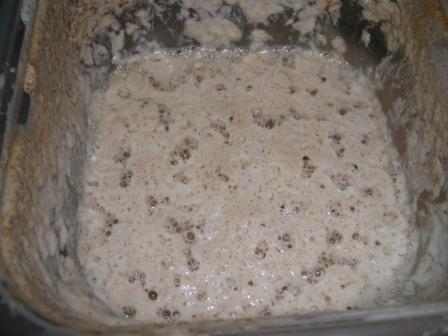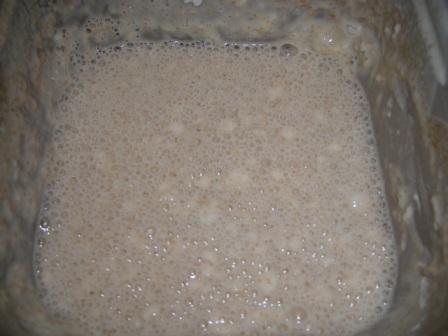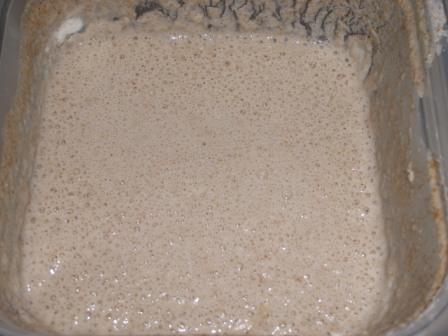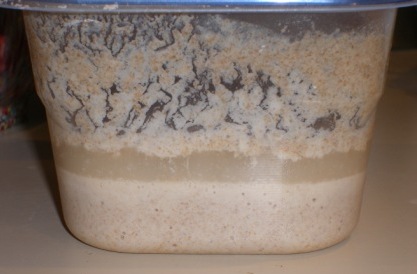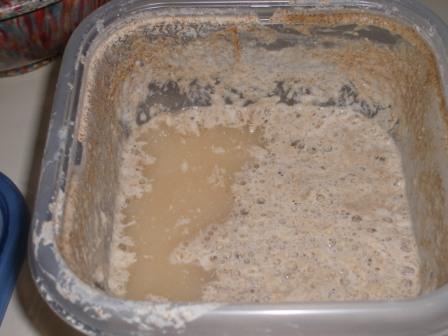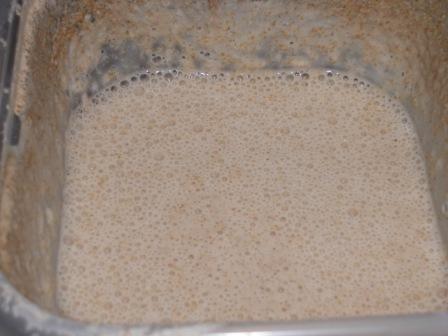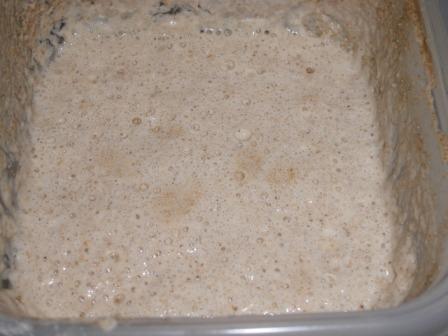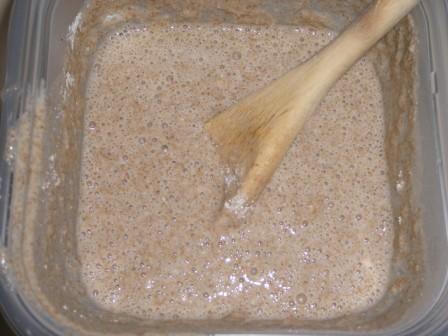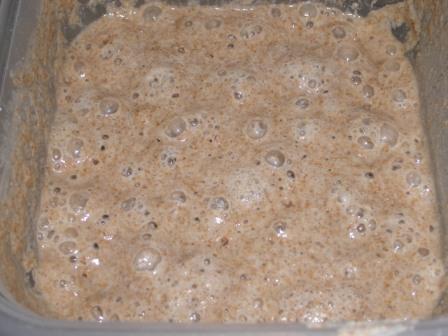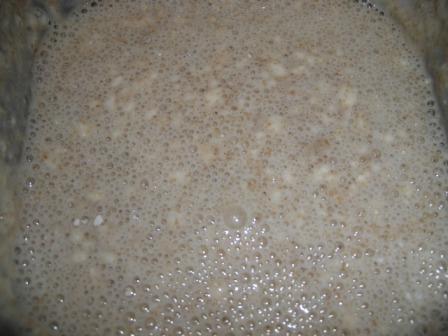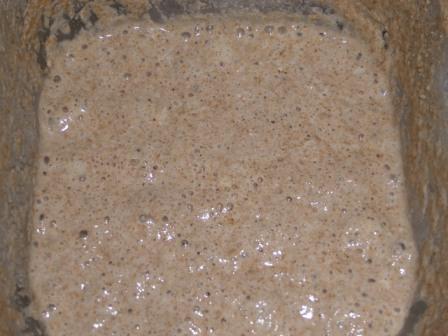And, I Can Bake With That Starter!!
Day Seven probably passed uneventfully for our starters on the counter and today, Day Eight is the big graduation day!!
Today after your first feeding you should have noticed the beginnings of a more active starter. In fact, you may now have the type of action you saw on Days 3 and 4!
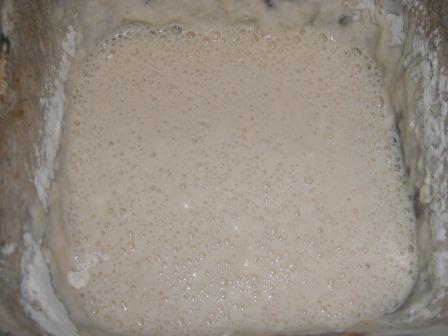
This is a sign your starter has adjusted to the all AP flour feedings. If you don't have a super active starter after today, don't panic. Your starter didn't die, it is just a late bloomer on the all AP flour diet. Sometimes it takes through Day 10 for a starter to adjust to the AP flour. However, if after Day 10 you don't have activity, there are a few things you can do to jump start your starter. I'll post about those on Monday, Day 10 when I'll also post about getting ready for the first bread try.
Another thing that happens today is, unless you are going to be baking with your starter every day, this will be the last day of two times a day feedings. Which is a good thing because with the cost of flour these days you are probably getting worried this starter child of yours is going to eat you out of 5lb bags of flour every week! Starting with tomorrow's feeding you will go to 1/2 cup of water and 1/2 cup of AP flour and wait twenty-four hours between feedings.
So, what are you waiting for??!!
Get out there, name your starter and try one of the two recipes I gave on Thursday (
Klondike Pancakes or Quick Bread/Muffins)! If you are feeling really brave and what to see the rising power of your starter you can try
my recipe for Sourdough Cinnamon Rolls.
And leave a comment telling us all what you named your starter. We're dying to know...
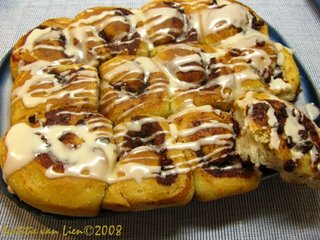 Lien's Sweet Rolls from the recipe below made with Gollum, her starter, who is now sleeping until May's BBB recipe
Lien's Sweet Rolls from the recipe below made with Gollum, her starter, who is now sleeping until May's BBB recipe.
Breadchick's Sourdough Sweet Rolls With Butter Cream FrostingPrep Time: 2 Days
This recipe uses the sponge method for a first rise followed by a second standard rise before you roll out dough for the rolls. Your sourdough starter should be well established as well to give the best results. Also, the temperature of the room you are baking in should be between 75 and 80 degrees. If room is colder, double the rising times. If kitchen is warmer, use a retarded rise method by placing dough in refrigerator (this method will take some watching of dough. expect 2 to 2.5 times longer on rises). This recipe is suited for either hand mixing or standing mixers.
This recipe results in 15 - 20 good sized rolls with a tangy sweet taste.
This recipe may be used to make cinnamon, gooey caramel or pecan caramel rolls (recipes for fillings are below).
INGREDIENTS FOR SWEET DOUGH:
1 C. sourdough starter
3/4 C. sugar
1/2 C. canola or vegetable/canola blend oil
1 Tbsp. salt
1 1/2 C. warm water (80 - 85 Degrees)
6 1/4 to 6 1/2 C. bread flour (depending on stiffness of batter, hold back 1/4 cup)
INGREDIENTS FOR FILLINGS:
Cinnamon Rolls:
1 C. Sugar
4 tbsp. Cinnamon (or to taste)
1 C. Raisins (Optional)
Orange Zest (Optional/to taste if you want Orange/Cinnamon rolls)
1/4 C. Melted Butter (to brush on rolled out dough)
Gooey Caramel Rolls:
1/2 C. Light Brown Sugar (packed)
1/2 C. Sugar
4 tbsp Cinnamon (or to taste)
1/4 tsp Salt (optional or to taste)
1/4 C. Melted Butter(to brush on rolled out dough)
Caramel Pecan Rolls:
1 - 1 1/2 C Pecans (lightly toasted and chopped coarsely)
1/2 C. Light Brown Sugar (packed)
1/2 C. Sugar
4 tbsp Cinnamon (or to taste)
1/4 tsp Salt (optional or to taste)
1/4 C. Melted Butter(to brush on rolled out dough)
INGREDIENTS FOR BUTTER CREME FROSTING
1/2 stick butter very soft but not melted
1/8 Cup Milk
2 Cups of Confectioner Sugar
1/2 tsp Vanilla Extract (or other flavoring of your choice. Almond or Orange is very nice on the Cinnamon Rolls!!)
Blend well adding more sugar if necessary until frosting is creamy and very spreadable
STEP 1: MAKING THE SPONGE
Combine the starter, the water and one half the flour (without 1/4 Cup held back in reserve) in a large glass or plastic bowl(Don't use a metal bowl as the starter will "react" to the metal). Cover loosely with plastic wrap and let rise at room temperature for at least 3 hours or until almost tripled.
STEP 2: MAKING THE SWEET DOUGH
Mix the sugar and salt together in small bowl. Stir down the sponge and add the oil and 1/2 the sugar/salt mixture to the sponge. Stir well until all the oil is almost absorbed by the dough. Add 2 cups of the flour and mix well until the dough is smooth. Add the rest of the sugar/salt mixture and 1/2 cup of the flour and mix well until combined fully. You may need to switch to hand mixing here if your dough is starting stiffen or if your standing mixer is starting
to strain, switch to the dough attachment. Add remaining flour (without 1/4 Cup held back in reserve). At this point you may find you have to use your hands to combine this flour. Dough should feel sticky but stiff. If the dough feels too loose or wet, add the 1/4 Cup of flour you held back held back slowly until dough feels right. Mix well by hand until dough is smooth and elastic. Dough will still be slightly sticky. Resist the temptation to add more flour as this will result
in tough rolls.
Place dough in a very large buttered glass or plastic bowl. Cover loosely with plastic wrap and let rise for 8 - 12 hours or until at least doubled or almost tripled.
Step 3: FORM THE ROLLS
Divide the dough into 2 halves and cover the half not being worked with plastic wrap and return to bowl. Turn the half of dough you are working with onto a floured surface for rolling and form into rough rectangle. Begin rolling dough out to form 15" x 6" rectangle that is about 1/2" thick. If dough springs back as your rolling use your hand to press into rectangle and roll out slowly. You will depress air pockets out of dough and the dough will be slightly resistant to rolling.
You may also have to let dough "rest" and relax between some rolls for a minute or two. Be patient, dough will relax. Also, be careful to not overwork the dough or add too much flour as you are rolling.
When you have dough rolled out, brush dough with melted butter; not too much or the sweet roll will "fall apart" during last rise. Just enough for filling to cling to dough. Generously sprinkle the filling of your choice from one long edge to the other, leaving about 1/4" of one long edge free of filling. Roll the dough slowly to form a long "roll". Pay attention to keeping "ends" of the roll as even as possible, working the ends to be even is necessary until all that is left to roll is
the 1/4" long edge border without filling. Brush water or an egg white wash on this 1/4" and seal the roll; gently pinching the roll to seal if necessary.
Using dental floss, cut the long roll into 1 1/2" - 2" sections and place in well buttered 13" x 9" glass baking dish.
Repeat method with remaining dough. (You may need to also use a second baking dish)
Cover baking dish with plastic wrap and let rise 8 - 12 hours or until rolls are almost doubled.
Step 4: BAKING/FROSTING
Bake Rolls at 350 Degrees for 45 minutes or until internal temperature of roll is 190 degrees.
Let completely cool (1 to 2 hours) and frost.
Note: If you make the gooey caramel or caramel pecan rolls, the caramel will set. To loosen from dish, set baking dish in pan of hot water for a few minutes before serving. These two rolls are also best served a bit warm. About 20 seconds in the microwave is about right to make them warm but the fillings not too hot.
Also, don't try and halve this recipe. If it makes too many rolls for you, just bake them and freeze them without frosting them. When you want a gooey roll, take a few out of the freezer, let them come to room temperature and frost them.










